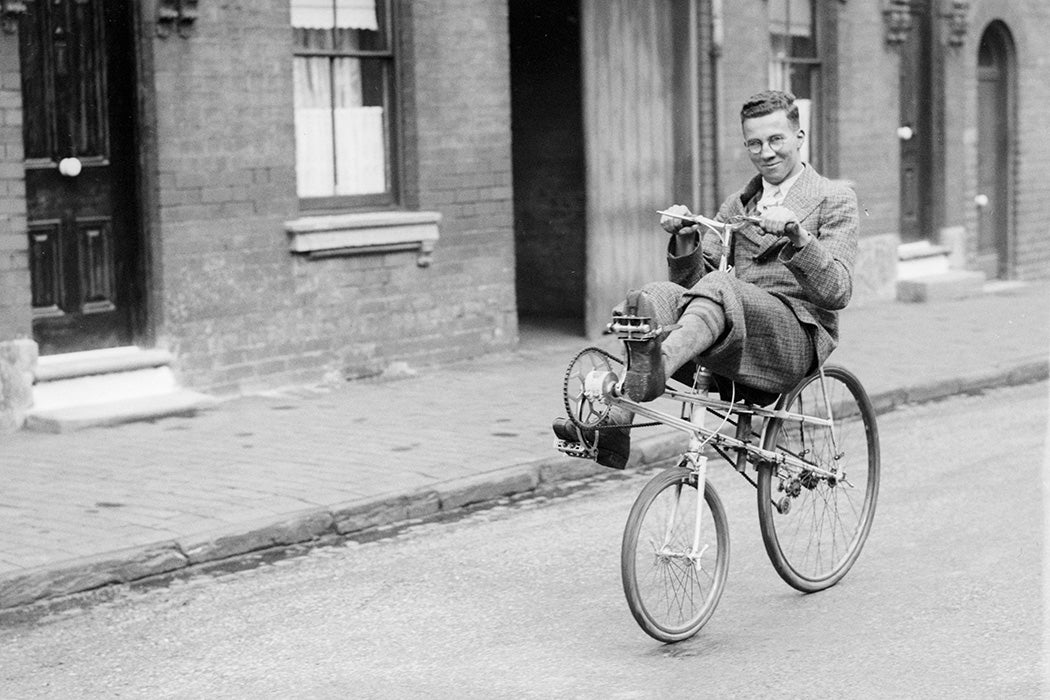Recumbent bicycles, ridden from a reclined position, are faster than standard upright bikes, and many people find them more comfortable, too. So why are they such a rare sight on the road today? As engineering researchers Hassaan Ahmed, Omer Masood Qureshi, and Abid Ali Khan write, the answer comes down to a choice made almost a century ago.
The “safety bicycle,” better known today as “the bicycle,” was a huge hit almost from the time John Starley introduced it in 1885. The safety was easier to ride, safer, and faster than the high-wheelers that preceded it. It replaced the high-wheeler among racers and hobbyists while also turning bikes into a form of transportation and recreation for women and the working class.
Almost half a century later, another technological innovation grabbed cyclists’ attention. Francis Faure, known to be far from the fastest rider, broke the one-hour record on a Velocar, a type of recumbent bike invented by Charles Mochet.
“At the finish line, the crowd’s reaction was similar to that of the crowd that witnessed the initial display of superiority of the safety bicycle: dominated by shock and anger,” Ahmed, Qureshi, and Khan write.
Some racers latched on to the speedier bike, but many did not. Instead, they viewed it as an imposter. The question of who was right fell to the Union Cycliste Internationale (UCI), formed in 1900 to set international rules for bike racing. This came to include defining the acceptable parameters of racing bikes. In 1914, for example, it banned fairings (coverings designed to make bikes more aerodynamic).
By the 1930s, the UCI had some reasons to be skittish about technological changes to the bicycle. The authors write that it was under pressure from bike manufacturers, which were ramping up production of safety bicycles to satisfy a growing Depression-era demand for cheap transportation.
“It is also likely that the UCI viewed potential identity or shape changes to the meaning of cycling dangerous to the cycling world as a whole,” they write. “We suspect that the UCI prioritized supporting the cycling world as a whole, as opposed to supporting promising new innovations in cycling technologies.”
Weekly Newsletter
The upshot was that even though Mochet had specifically designed the Velocar to fit existing UCI rules, the organization upheld a 1935 challenge to the use of the model with little explanation. It went on to publish a new definition of “bicycle” that set out standard dimensions, clarifying the Velocycle’s out-of-bounds position.
The authors identify this moment as a rhetorical closure, in which a dominant technology became viewed as the only option, with no need for better-designed competitors. UCI’s position as an arbiter of biking protocol ensured that neither racers nor other riders adopted recumbent bikes in large numbers. Ultimately, only 800 Velocars sold. Even today, recumbent bikes are a specialty product, with no cheap options that might encourage riders to try out a faster, more comfortable ride.
Support JSTOR Daily! Join our new membership program on Patreon today.







